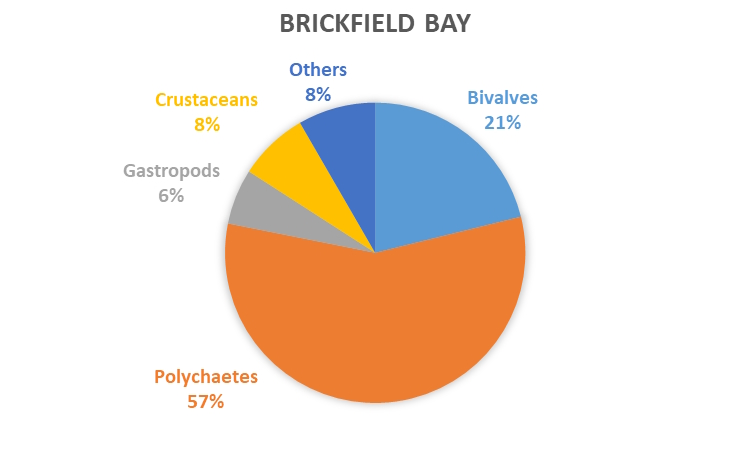Coromandel Harbour - estuary monitoring results
Sediment-dwelling organisms
In Coromandel Harbour polychaetes (marine worms) are the major component of the sediment-dwelling organism community. Bivalves (shellfish – cockles) are relatively abundant at all sites. Crustaceans (amphipods – shrimp like, crabs) and other taxa (oligochaetes) are relatively abundant at Awakanae Stream and Brickfield Bay. Gastropods (snails) are generally found in low numbers in Coromandel Harbour.
For further monitored results (estuary health indicators) please go to the estuary health LAWA website. A detailed analysis of all trends in our results as well as the relationships between sediment properties and sediment-dwelling communities are investigated in our latest trend report.






